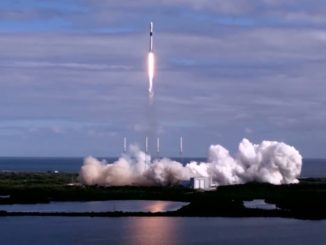
Update 2:43 p.m. EST (1943 UTC): SpaceX landed the first stage booster on the its droneship.
SpaceX kicked off the weekend with the launch a Falcon 9 rocket with its latest batch of Starlink V2 Mini satellites Saturday afternoon. It’s the first of two planned weekend flights for the company with the Starlink 11-10 mission on tap for Sunday afternoon in California.
The mission, dubbed Starlink 12-9, was the 10th dedicated Starlink mission of the year and the 11th with Starlink satellites on board. Liftoff from pad 40 at Cape Canaveral Space Force Station happened at 2:18 p.m. EST (1918 UTC).
The rocket flew in a southeasterly trajectory as it headed away from the Cape.
Among the 21 Starlink satellites onboard the Starlink 12-9 mission were 13 that have Direct to Cell capabilities. Prior to Saturday, SpaceX launched 466 of these DTC Starlink satellites and began rolling out some beta testing in the United States.
SpaceX used the Falcon 9 first stage booster, tail number 1078, for Saturday’s flight. This was its 17th launch after supporting missions like USSF-124, Crew-6 and 12 previous batches of Starlink satellites.
A little more than eight minutes after liftoff, B1078 landed on the SpaceX droneship, ‘A Shortfall of Gravitas.’ The touchdown marked the 97th booster landing for ASOG and the 406th landing for SpaceX to date.
SpaceX also used the recovery vessel, named ‘Doug,’ to retrieve the payload fairing halves once they splashed down in the waters of the Atlantic Ocean. The vessel was named for former NASA astronaut Doug Hurley, one half of the pair who flew the Demo-2 mission, which was SpaceX’s first mission sending crew to and from the International Space Station.
The company is currently planning for the Crew-10 launch as well as a private astronaut mission to the ISS in partnership with Axiom Space. SpaceX also helped train a commercial astronaut mission that will use a Dragon spacecraft that won’t dock with the space station, but instead fly over the poles over a roughly three-day flight.



